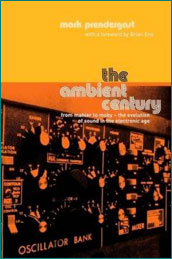After 30 years the term is starting to sound a bit dated. Originally a 1970s reference to the conjunction of ambient electronics and our expanding visions of cosmic space, it turned out to be a very old kind of music with a long and varied history.
When you listen to space and ambient music you are connecting with a tradition of contemplative sound experience whose roots are ancient and diverse. The genre spans historical, ethnic, and contemporary styles. In fact, almost any music with a slow pace and space-creating sound images could be called spacemusic.
The material we work with is generally quiet, mostly consonant, often ethereal and without conventional rhythmic and dynamic contrasts. Significantly, words fail to convey the experience. It's as if it's being processed by a different part of the brain. Listen for a few seconds, though, and it's all very clear.
Some people have no interest in spatial music and even find it annoying, but a generous fraction of the population spanning all ethnic, geographic and demographic boundaries immediately understand and respond to this kind of sound experience. They crave it and even use addiction metaphors to describe their need for it. We say they have "ambient DNA." You may be one of them. If so, you will find much nourishment here.
Space and Ambient music can relax the body while stimulating the imagination. Artists swear by it for creative work. Programmers cherish it as an aid to concentration and complex problem solving. Restorative powers are often claimed for it, and at its best it can create an effective environment to balance some of the stress, noise, and complexity of everyday life.
Unlike conventional background music, with its watered-down melodies from years-gone-by, spacemusic does not depend on simple nostalgia (in the words of Brian Eno) "to induce calm and a space to think." Instead, it creates expansive sound images with subtle psychological resonances.
There are lots of theories about why it works. Bookstores are filled with impressive sounding works on the subject of music for therapy, relaxation, enhancing the intelligence of your child, etc. Some of it is backed up by research; most is purely speculative. Perhaps one day we will better understand the interaction of the brain and the psyche.
For now, listeners know that it works if they simply open themselves to the experience. While this does not require any special talent or education, it helps to have ambient DNA. One of our all time favorite listener letters is: "Even though I am a redneck, I enjoy your program."
The best general treatment of the subject is Mark Prendergast's excellent The Ambient Century. [view at Amazon.com]
From abstract electronic soundworlds to orchestral soundtracks, classical adagios to delicate jazz improvisations, traditional ethnic and religious music to ambient atmospherics — Hearts of Space ranges across the music of thousands of artists and albums to create spatial/ambient experiences of quality and depth: contemplative music, broadly defined.
 SLOW MUSIC FOR FAST TIMES
SLOW MUSIC FOR FAST TIMES 
